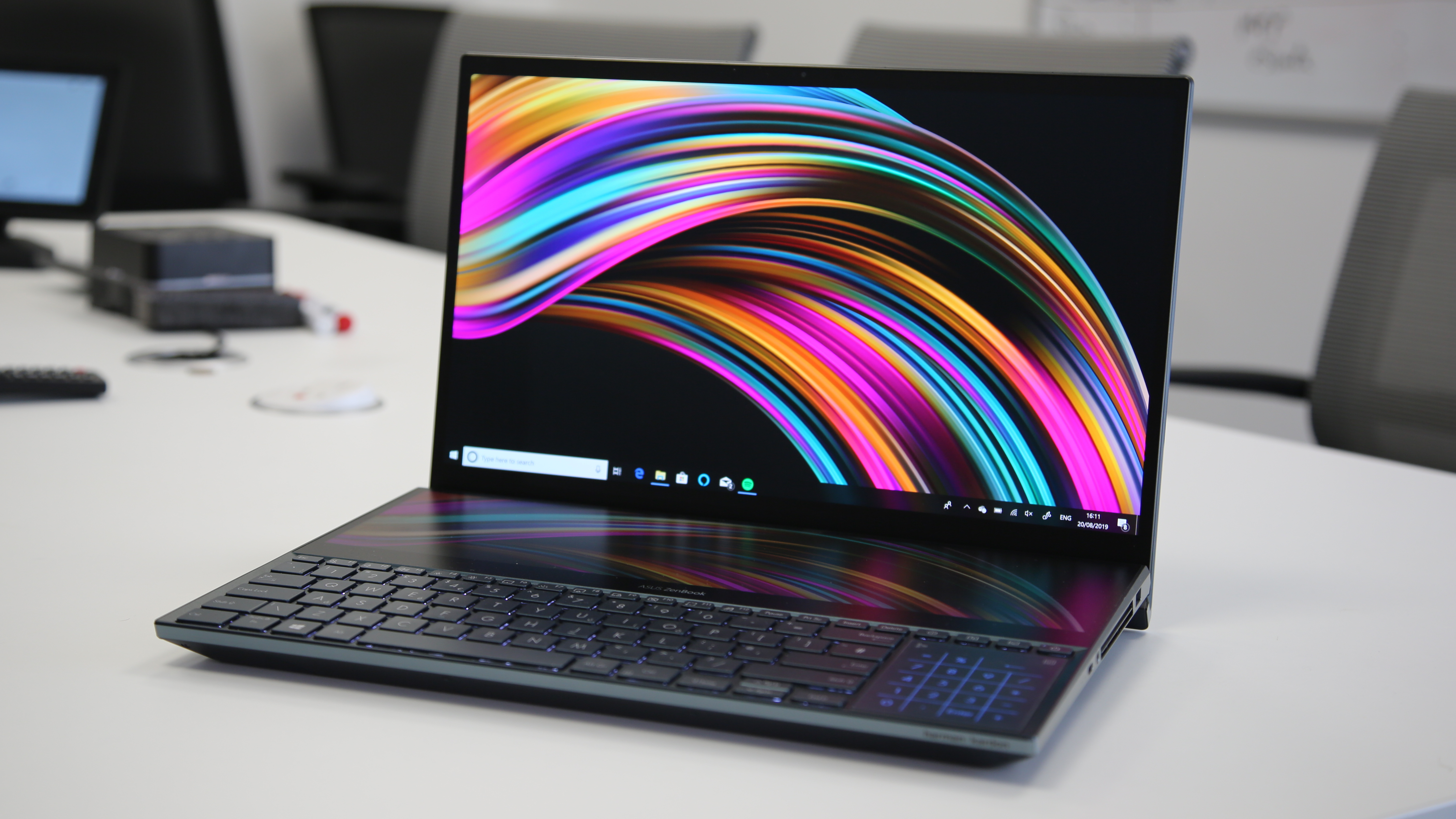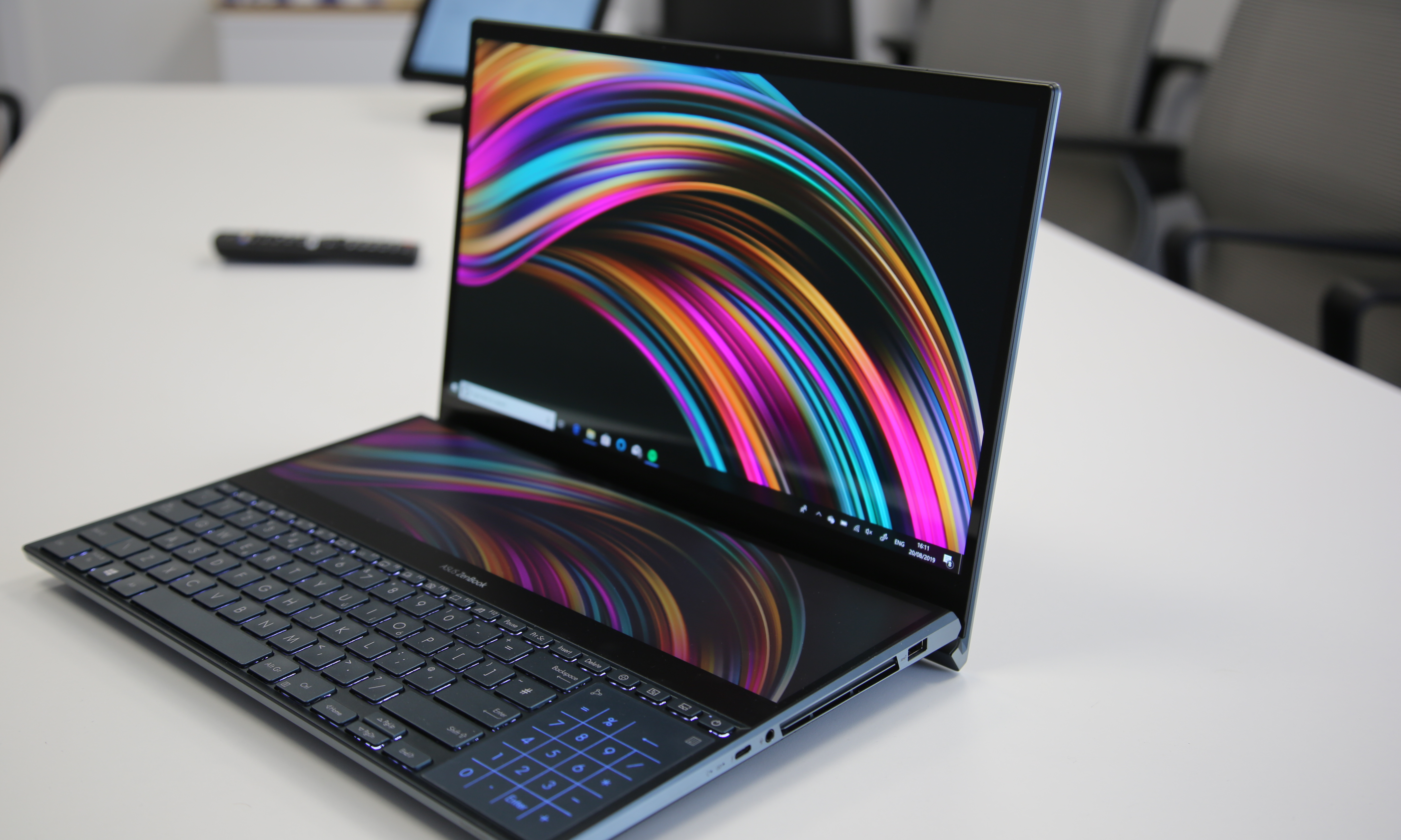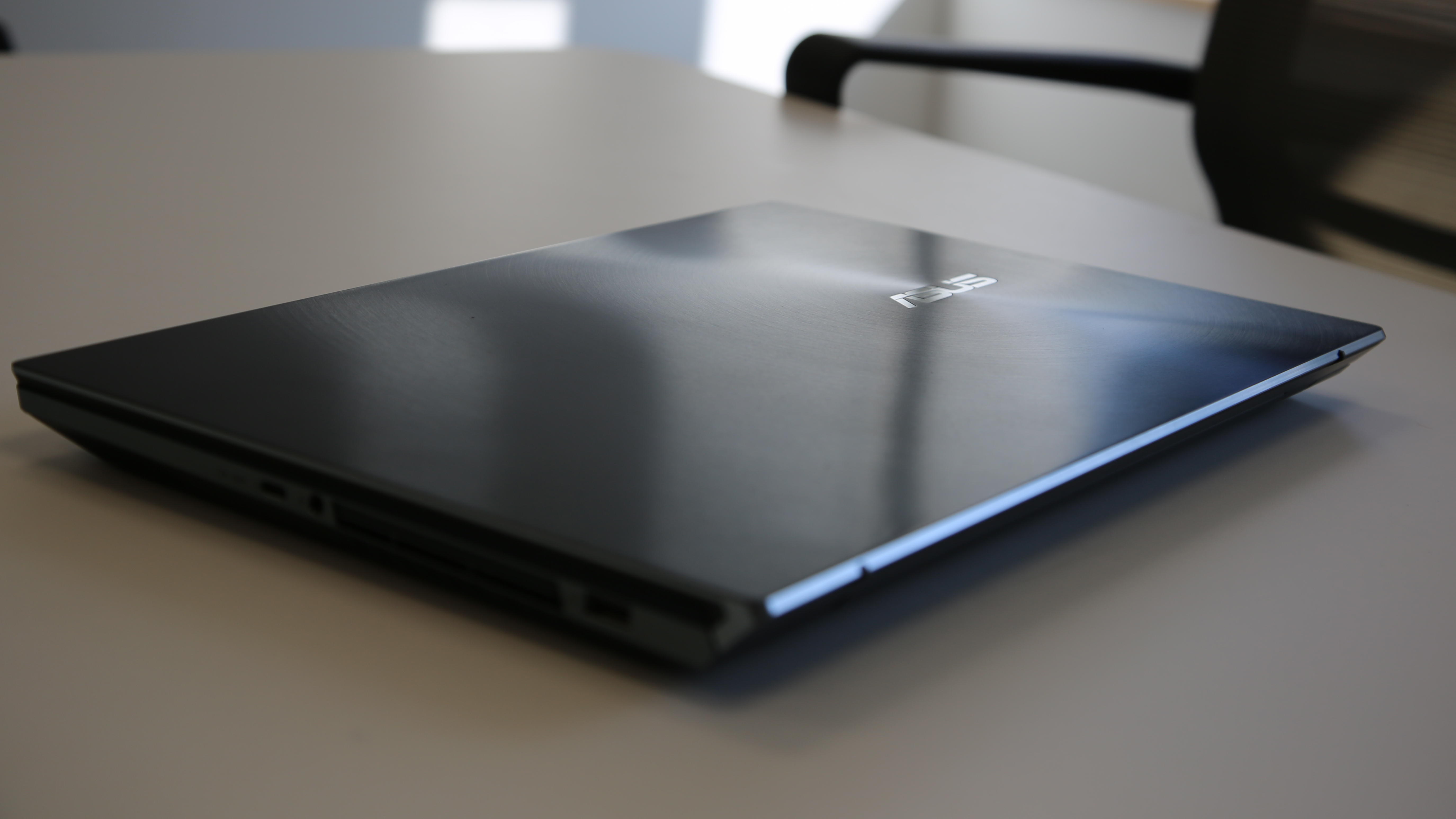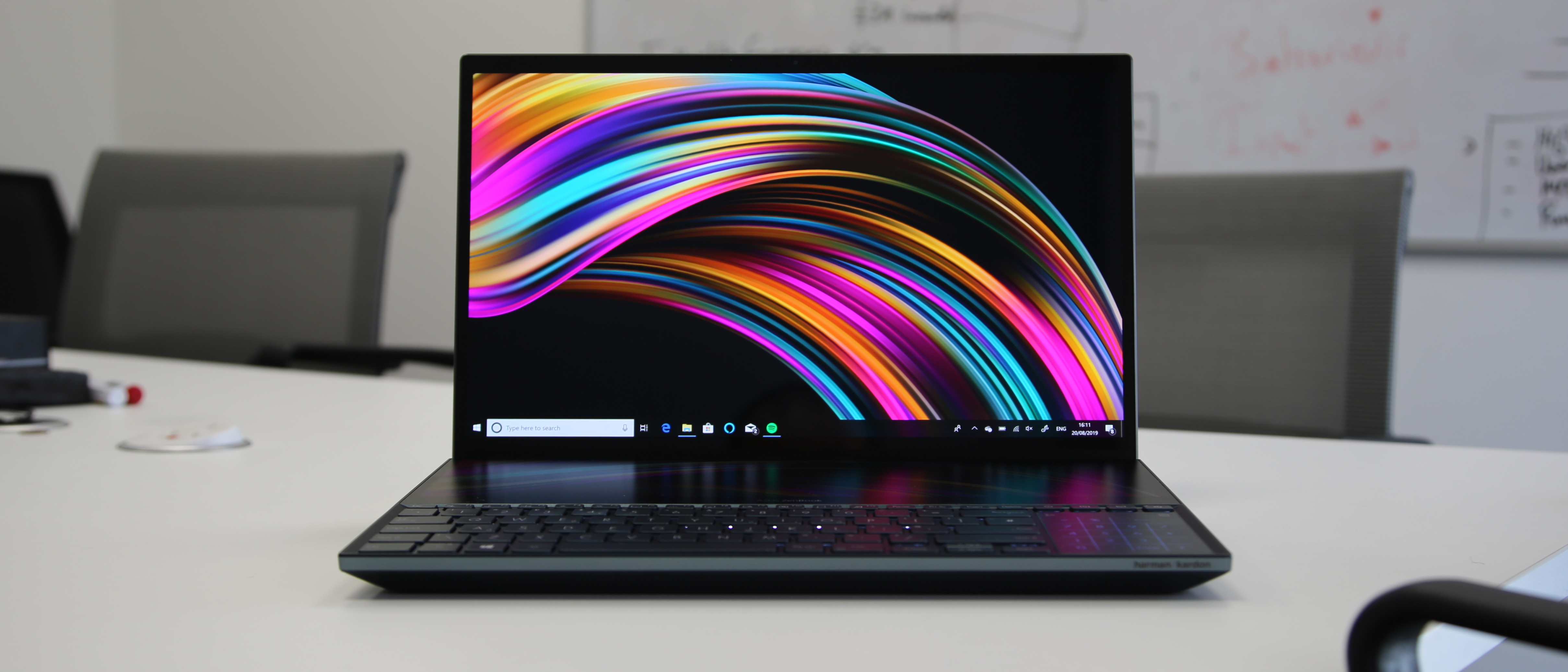Why you can trust TechRadar
Here’s how the Asus ZenBook Pro Duo UX581 performed in our suite of benchmark tests:
3DMark Sky Diver: 26,731; Fire Strike: 13,620; Time Spy: 5,898
Cinebench CPU: 1,741 points; Graphics: 122.22 fps
GeekBench 4: 5,351 (single-core); 28,252 (multi-core)
PCMark 8 (Home Test): 3,570 points
PCMark 8 Battery Life: 2 hours and 36 minutes
Battery Life (TechRadar movie test): 5 hours and 11 minutes
The Asus ZenBook Pro Duo is aimed at professionals, so it comes with a pretty decent specs list, with the choice of a hexa-core Intel Core i7-9750H processor or octa-core Intel Core i9-9980HK processor, Nvidia GeForce RTX 2060 graphics card and up to 32GB of RAM.
This means the Asus ZenBook Pro Duo is a pretty speedy laptop that can easily handle most tasks. It’s actually not that bad for gaming on as well – though you’ll need to lower the resolution of games from the screen’s native 4K resolution to something more manageable – as the RTX 2060 just can’t handle gaming at 4K.
The processors really are the stars of the show here, especially the Intel Core i9-9980HK, which makes multitasking with the Asus ZenBook Pro Duo a joy – which is just as well considering the second screen which encourages you to run multiple apps at once.
During our time with the Asus ZenBook Pro Duo we were very impressed with how the laptop performed. Windows 10 felt spritely, apps opened quickly and there’s no pause when you drag open apps and windows between screens.

The only noticeable slowdown we encountered was on loading up a game, which by default had set itself to 4K, and meant even scrolling through the menus was a chore. Once the resolution was lowered, however, things settled down.
We did struggle to run some games – hence why there’s no Shadow of the Tomb Raider benchmark. So, while the Asus ZenBook Pro Duo could in theory be a decent gaming laptop, we’d advise against buying it for the sole purpose of playing games on.
As a workstation, though, the Asus ZenBook Pro Duo is an excellent performer with some very solid – and future-proof – components driving the whole thing.
Sign up to the TechRadar Pro newsletter to get all the top news, opinion, features and guidance your business needs to succeed!

Battery life
A big, chunky laptop that’s packed with powerful components and features two 4K screens was never going to have a long battery life, and in our tests that proved to be the case with the Asus ZenBook Pro Duo.
In our battery life benchmark test, which involves looping a 1080p video with the screen at 50% brightness, the Asus ZenBook Pro Duo’s battery lasted five hours and 11 minutes. In the PC Mark 8 benchmark, which aims to replicate moderate PC use including word processing and video calling, the battery lasted just two hours and 36 minutes.
Clearly, this is a laptop that’s to be used as a desktop replacement, which means you’ll pretty much need it to always be plugged in to a power socket unless you’re doing very light work on it.
Of course, you can tweak it to eke out more battery life – for example turning off the second screen, and lowering the brightness and resolution of the main display, but it’s probably something you’d not want to do.
While the limited battery life of the Asus ZenBook Pro Duo isn’t a surprise, it’s still a bit disappointing.

Verdict
Asus has tried to do something different with the ZenBook Pro Duo, and while it’s not an unmitigated success, we have to give the company props for giving it a go.
While the build quality and high specifications of the ZenBook Pro Duo is certainly worthy of praise, its biggest selling point – the Screenpad Plus doesn’t quite justify the additional price (and weight) that it adds to the laptop.
There’s a few nice features that comes with the second 4K screen, and with a bit of tweaking, many people may be able to set it up to work in a way that is genuinely helpful for improving productivity. For example, having an app open on the bottom screen can be really useful, and frees up space on the main screen.
But is it really that useful? We’d argue not. After all, the very short battery life of the ZenBook Pro Duo means you’ll need to plugged in and sat on a desk most of the time anyway – so you might as well just plug in an external monitor for a similar experience.
For less than the price that Asus is asking for with the ZenBook Pro Duo, you could by an equally powerful laptop that’s a lot more svelte and portable, so you’ll need to ask yourself if you’re willing to make compromises for the Screenpad Plus. Many people won’t.
However, we hope this isn’t the last we see of the Screenpad Plus. Future laptops could better integrate a second screen while keeping the size and weight of the laptop down. Apple has persisted with the Touch Bar – which was pretty much unloved when it first appeared – and we expect Asus to do the same with the Screenpad Plus.
Meanwhile, we continue to wait for a genuinely disruptive new form factor for laptops. Perhaps the future lies with laptops with foldable screens. For now, though, the Asus ZenBook Pro Duo remains more of a curio than a breakthrough, but there will be a select few people who will fall in love with this unique laptop.

Matt is TechRadar's Managing Editor for Core Tech, looking after computing and mobile technology. Having written for a number of publications such as PC Plus, PC Format, T3 and Linux Format, there's no aspect of technology that Matt isn't passionate about, especially computing and PC gaming. He’s personally reviewed and used most of the laptops in our best laptops guide - and since joining TechRadar in 2014, he's reviewed over 250 laptops and computing accessories personally.
